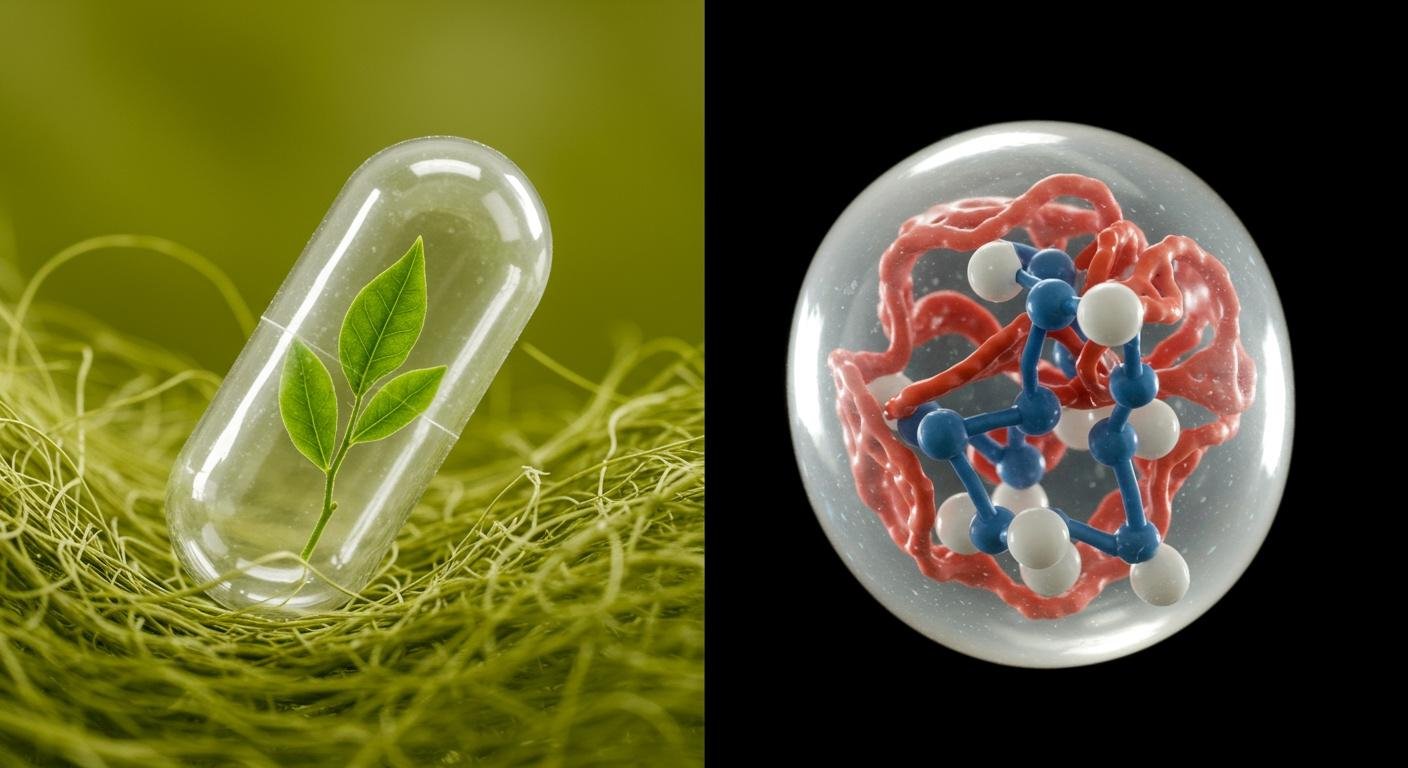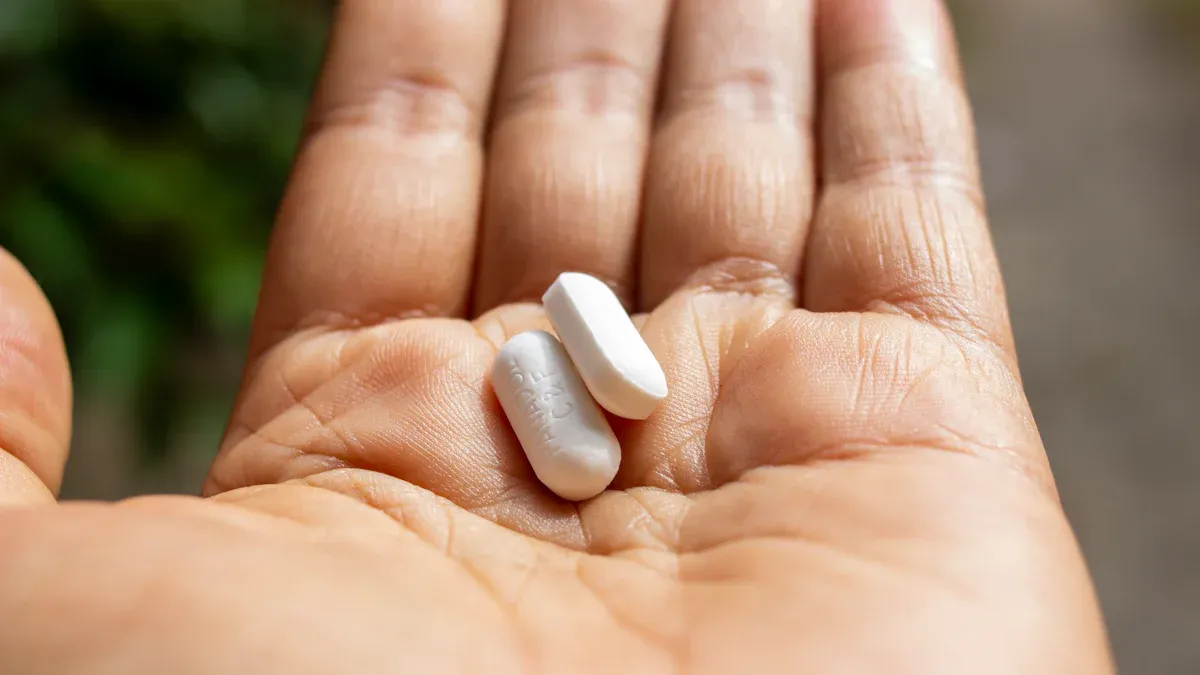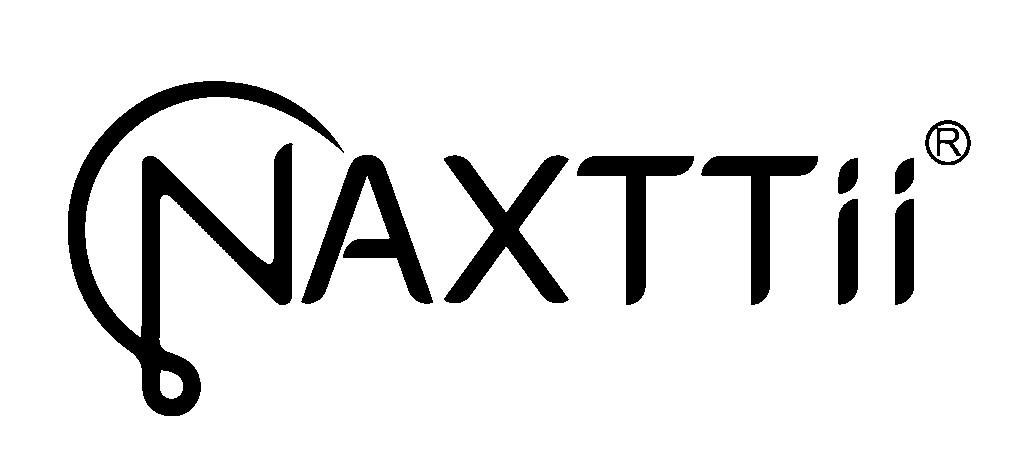Capsule Shell Materials Cellulose vs Gelatin
Table of Contents

The fundamental difference between capsule shell materials is their origin. A cellulose capsule comes from plants. In contrast, a gelatin capsule uses gelatin from animal sources. This distinction impacts performance, dietary needs, and cost. The popularity of the vegetarian capsule is rising, with market projections showing strong growth.
- The vegetarian softgel capsules market is projected to register a CAGR of 4.6%.
- The Vegetable (HPMC) Capsule market is projected to grow at a CAGR of 5.2%.
- The global Vegetarian Capsule Material Market is forecasted to have a CAGR of 8.5%.
COMPARING CAPSULE SHELL MATERIALS

Choosing between capsule shell materials involves understanding their core differences. A direct comparison of a vegetarian capsule and a gelatin capsule reveals distinct advantages for each. This guide breaks down the key factors, from origin to performance, to clarify your options.
| Feature | Vegetarian Capsule (Cellulose-based) – | Gelatin Capsule (Animal-based) – |
|---|---|---|
| Source | Plant-based. Made from cellulose, typically HPMC (Hydroxypropyl Methylcellulose) or Pullulan. – | Animal-based. Made from collagen, a protein derived from animal byproducts. – |
| Moisture Content | Low (3-7%). Ideal for moisture-sensitive or hygroscopic ingredients. – | High (13-16%). Requires controlled humidity to prevent brittleness or softening. – |
| Stability | Highly stable across a wide range of temperatures and humidity. Not prone to cross-linking. – | Sensitive to heat and humidity. Can become brittle if too dry (<10% moisture) or soft and sticky if too humid (>65% RH). Prone to cross-linking. |
| Performance | Slower dissolution in stomach acid. Higher oxygen permeability. – | Rapid dissolution in the stomach. Excellent natural oxygen barrier. – |
| Dietary Suitability | Vegan, vegetarian. Certified Kosher and Halal. Free of common allergens. – | Not suitable for vegans or vegetarians. May not meet some Kosher or Halal requirements unless specifically certified. – |
| Cost | Generally more expensive due to complex manufacturing and raw material processing. – | Typically lower cost due to mature manufacturing processes and abundant raw materials. |
SOURCE AND ORIGIN
The primary distinction between these hard capsules is their source material. A vegetarian capsule is entirely plant-derived, making it a top choice for those following specific dietary or ethical lifestyles.
- Cellulose Capsules: Most vegetarian hard capsules are HPMC (Hydroxypropyl Methylcellulose) capsules. Manufacturers derive HPMC from natural plant cellulose. Common sources include:
- Pine fibers
- Spruce fibers
- Poplar fibers
- Pullulan Capsules: Another vegetarian capsule option is Pullulan. This material comes from a natural fermentation process using the fungus Aureobasidium pullulans. It is a water-soluble polysaccharide recognized as safe and effective for capsule production.
Did You Know? 🧐 Pullulan is biocompatible, non-toxic, and has excellent film-forming properties, making it a valuable material in both the food and pharmaceutical industries.
In contrast, gelatin capsules have an animal origin. Manufacturers produce gelatin by boiling collagen-rich animal byproducts.
- Gelatin Capsules: The gelatin comes from various animal sources. The global market for gelatin relies heavily on these materials:
- Pig skin (46%)
- Bovine hides (29.4%)
- Pork & cattle bones (23.1%)
This fundamental difference in origin is the main reason consumers choose one type of capsule over the other.
MOISTURE AND STABILITY
Moisture content directly impacts a capsule’s stability and its compatibility with different ingredients. This is where HPMC-based capsules show a significant advantage.
A vegetarian capsule has a naturally low moisture content, typically between 3% and 7%. This makes HPMC capsules an excellent choice for protecting moisture-sensitive (hygroscopic) ingredients from degradation. The lower moisture level improves the stability and shelf life of the final product.
On the other hand, a gelatin capsule requires a much higher moisture content—between 13% and 16%—to remain flexible.
- Below 10% moisture, a gelatin capsule can become brittle and crack.
- Above 16% moisture, it can soften, deform, and become sticky, especially in high humidity.
Furthermore, gelatin is susceptible to a chemical reaction called cross-linking, especially when exposed to certain ingredients or storage conditions. This can alter the capsule’s dissolution time and affect the product’s performance. HPMC capsules are not prone to cross-linking, offering more predictable stability.
PERFORMANCE AND SOLUBILITY
The performance of a capsule is measured by how well it protects its contents and how reliably it releases them. Both capsule types are effective, but they behave differently.
When it comes to dissolution, gelatin capsules have a slight edge in speed.
- In simulated gastric fluid (pH 1.2), a gelatin capsule can release over 80% of its contents in as little as 5 minutes.
- HPMC capsules dissolve more slowly, taking around 13.5 minutes to reach the same 80% release threshold.
This rapid release makes the gelatin capsule ideal for immediate-release formulations.
However, oxygen protection is another critical performance factor. Gelatin is a superior natural barrier to oxygen compared to cellulose. Gelatin-based hard capsules offer excellent protection for ingredients that are sensitive to oxidation. While HPMC capsules have higher oxygen permeability, this is often managed with secondary packaging solutions. The overall performance of both hard capsules is reliable for most applications.
COST AND MANUFACTURING
Manufacturing processes and raw material costs create a clear price difference between the two capsule shell materials.
Gelatin capsule production is a well-established, highly efficient process. The raw materials are abundant byproducts of the meat industry, which generally keeps costs low. As a result, gelatin capsules are the more economical option.
The manufacturing of a cellulose capsule, particularly HPMC-based capsules, is more complex. It requires precise control over temperature and humidity, which can slow production speeds. The processing of plant cellulose into HPMC is also more intensive. These factors contribute to the higher price of a vegetarian capsule.
A Note on Sustainability ♻️ While gelatin uses animal byproducts, the push for sustainable production is growing. Likewise, the sourcing of plant cellulose for HPMC capsules raises questions about forestry management and sustainability. Both industries are adapting to meet consumer demand for more environmentally friendly products.
Price fluctuations of raw materials also affect the final cost. The price of gelatin can change based on the agricultural market, while cellulose costs are tied to the timber industry.
MAKING YOUR CHOICE
Deciding between capsule shell materials depends on your specific needs. Both a vegetarian capsule and a gelatin capsule offer unique benefits. The right choice often comes down to the fill material, dietary preferences, and budget.
WHEN TO CHOOSE A VEGETARIAN CAPSULE
A vegetarian capsule is the ideal choice in several key scenarios. People choose this capsule for its plant-based origin and technical advantages.
- Dietary and Ethical Needs: A vegetarian capsule is perfect for individuals following vegan, vegetarian, Kosher, or Halal diets.
- Moisture-Sensitive Ingredients: These hard capsules have low moisture content (3-7%). This makes a vegetarian capsule excellent for hygroscopic ingredients like herbal extracts and probiotics, which require a dry environment to maintain stability.
- Avoiding Cross-Linking: Certain compounds can react with gelatin. A vegetarian capsule does not cross-link, ensuring consistent performance.
WHEN TO CHOOSE A GELATIN CAPSULE
A gelatin capsule remains a popular and effective option for many applications. Its properties make it a reliable choice for both manufacturers and consumers.
- Cost-Effective Production: Gelatin is generally less expensive. Its efficient manufacturing makes the gelatin capsule a go-to for mass-market supplements and medications.
- Oxygen-Sensitive Fills: Gelatin provides a superior natural oxygen barrier. This feature is crucial for protecting oils like fish oil, vitamin E, and krill oil from oxidation.
- Rapid Release: A gelatin capsule dissolves quickly in the stomach. This is beneficial for ingredients that require immediate absorption.
KEY FILL-MATERIAL CONSIDERATIONS
The ingredient inside the capsule is a major factor. Some materials are incompatible with gelatin.
Important Note for Formulation 📝 The pH of a liquid fill should be between 2.5 and 7.5 for a gelatin capsule. Extreme pH levels can damage the gelatin shell.
Some active ingredients are known to cause cross-linking with gelatin. This reaction can harden the gelatin and slow the release of the contents.
- Rofecoxib
- Nimesulide
- Macrolide antibiotics
For these compounds, a vegetarian capsule is a safer choice. The stability of HPMC hard capsules makes them suitable for a wider range of fill materials. Gelatin hard capsules work well for most powders, but HPMC hard capsules offer better protection for sensitive ingredients. Ultimately, the choice between a vegetarian capsule and a gelatin capsule depends on balancing ingredient stability, dietary needs, and cost.
Both vegetarian and gelatin capsules offer effective delivery. The ideal capsule depends on personal priorities. Decision drivers include dietary needs, ingredient stability, and budget. The market for capsule shell materials also continues to advance with options like flavored gelatin.
Consumers should always check product labels. This ensures their choice of capsule aligns with their health goals and values.
FAQ
What is the main difference between a vegetarian and a gelatin capsule?
The primary difference is their source. A vegetarian capsule comes from plant cellulose (HPMC). A gelatin capsule comes from animal collagen. This distinction affects dietary suitability, stability, and performance.
Is a vegetarian capsule better than a gelatin capsule?
Neither capsule is universally better. The “best” choice depends on personal needs. A person should consider their diet, the ingredient’s sensitivity, and the product’s cost. Each type offers unique advantages for different situations.
Why are vegetarian capsules good for probiotics?
A vegetarian capsule has very low moisture content (3-7%). This quality makes it ideal for moisture-sensitive ingredients like probiotics. The dry environment inside the HPMC capsule protects the delicate organisms, ensuring their stability and effectiveness.
Are gelatin capsules cheaper than vegetarian capsules?
Yes, a gelatin capsule is typically the more economical option. Its manufacturing process is highly efficient and well-established. The raw materials are abundant animal byproducts, which helps keep production costs lower than those for vegetarian capsules. 💰

Poseidon
Master of Nutritional Epidemiology, University of Copenhagen, Herbal Functional Nutrition Researcher
Focus: The scientific application of natural active ingredients such as Tongo Ali, Horny Goat Weed, and Maca to sexual health and metabolic regulation.
Core Focus:
Men: Use a combination of Tongo Ali (an energizing factor) + Maca (an energy reserve) to improve low energy and fluctuating libido.
Women: Use a combination of Horny Goat Weed (a gentle regulator) + Maca (a nutritional synergist) to alleviate low libido and hormonal imbalances.
Stressed/Middle-Aged Adults: This triple-ingredient synergy supports metabolism, physical strength, and intimacy.
Product Concept:
Based on traditional applications and modern research (e.g., Tongo Ali promotes testosterone-enhancing enzyme activity, and icariin provides gentle regulation), we preserve core active ingredients and eschew conceptual packaging—using natural ingredients to address specific needs.
Simply put: I'm a nutritionist who understands "herbal actives." I use scientifically proven ingredients like Tongo Ali, Epimedium, and Maca to help you make "sexual health" and "nutritional support" a daily routine.
